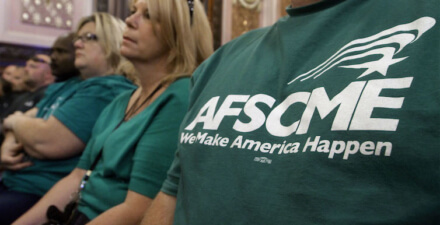Testimony by Kate Bahn before the U.S. House of Representatives Judiciary Committee
Washington Center for Equitable Growth
Testimony before the U.S. House of Representatives Judiciary Committee hearing on “Antitrust and Economic Opportunity: Competition in Labor Markets”
October 29, 2019
Thank you Chair Nadler, Ranking Member Collins, Subcommittee Chair Cicilline and Subcommittee Ranking Member Sensenbrenner for inviting me to testify today. My name is Kate Bahn and I am the Director of Labor Market Policy and an economist at the Washington Center for Equitable Growth. We seek to advance evidence-backed ideas and policies that promote strong, stable, and broad-based growth.
The United States is in the longest labor market expansion in U.S. history, yet many workers still feel stuck with few opportunities or they are changing jobs but without advancing their skills or improving their incomes. The U.S. economy has been suffering from stagnant wage growth, rising income inequality, and a general decline in the dynamism that once produced a vibrant labor market. Economists and policymakers are increasingly recognizing that monopsony is a major cause of these dynamics.
Monopsony refers to a labor market that lacks competition among employers when hiring workers—the equivalent to the product-and services markets phenomenon “monopoly” that refers to a lack of competition among sellers of products or services. While monopoly means consumers pay higher prices or receive lower quality than in a competitive market, monopsony in labor markets means workers receive lower wages or worse working conditions than if there were a competitive market for their services. Monopsony has traditionally been thought of as a rare circumstance where a labor market only has one or very few employers, such as would be the case in a geographically remote mining town where workers don’t have outside options. But it also encompasses any situation in which workers aren’t moving between jobs in search of higher pay in part because they face so-called frictions that inhibit their ability to search for and find jobs that would be a better match.
New sources of data and innovative econometric methods have allowed researchers to test and confirm the premise that employers have geographic concentration over jobs that lead to lower pay. Using new data from CareerBuilder.com, economists Jose Azar at the IESE Business School at the Universidad de Navarra, Ioana Marinescu at the University of Pennsylvania, and Marshall Steinbaum at the University of Utah, Salt Lake City find that going from a less concentrated labor market to a more concentrated one was associated with a 17 percent decline in the wages employers were posting to the website.1 While mining towns may be more rare, increasing concentration in a number of sectors of the U.S. economy can still lend market power to individual employers, which leads to low wages.
While empirical estimations of concentration are one way to measure how anticompetitive markets are, many economists instead use something called labor supply elasticity, or how sensitive workers appear to be to wage changes, to then estimate the degree to which employers are able to exploit lower pay sensitivity by undercutting wages. This way of understanding and estimating monopsony was pioneered by economist Alan Manning of the London School of Economics in his 2003 book Monopsony in Motion. Manning applied the empirical estimation techniques of the job-search model to demonstrate that anytime workers are not switching jobs in response to wage changes, employers have monopsony power to suppress wages.
The once prevailing competitive labor market model predicts that firms that cut wages would immediately lose all their workers, but new research shows that workers do not behave as the competitive model predicts. In a recent meta-analysis of the monopsony research, economists Todd Sorensen and Anna Sokolova of the University of Nevada, Reno find that, on average, if an employer cuts wages by 5 percent, they only lose 10 percent to 20 percent of their workers over time, not all of them as a competitive model would predict. In these circumstances, individual employers are empowered to suppress wages without risking losing their supply of workers to their competitors.
In a dynamic monopsony model such as this, so-called search frictions and differences between jobs and workers—including workers having imperfect information about employers, caregiving responsibilities outside of work, and other constraints to job mobility—would give employers more power to set wages below competitive levels while still maintaining a sufficient supply of workers. These dynamics fosters inequitable outcomes for workers.
Research by Doug Webber of Temple University uses high-quality restricted-access data from the U.S. Census Bureau’s Longitudinal Employer Household Dynamics Survey to estimate economywide elasticity of 1.08. Webber’s estimations would imply wages 50 percent lower than economists would expect in a competitive labor market.2 Yet there is still a lot of variation among firms. Examining monopsony by industry, he finds that wages in manufacturing appear to be more competitive, while health care and administrative support are the least competitive, giving employers the most wage-setting power in these industries.
Dynamic monopsony across the U.S. economy may be one of the reasons we experience high income inequality in our nation, and why most workers have not been able to share in the economic growth of the world’s wealthiest nation. Webber calculates a “counterfactual earnings distribution,” hypothesizing what things would look like without the patterns of monopsony that he finds. He presumes a one-unit increase in firms’ labor supply elasticity and finds that it would be associated with a 9 percent reduction in the variance of the earnings distribution. In other words, reducing the impact of monopsony across the economy would make it more equitable for workers.
Evidence points to monopsony being particularly detrimental to women workers. Further research by Webber finds that monopsony contributes to the overall gender wage gap.3 This research estimates that women’s greater job-search frictions compared to men leads to 3.3 percent lower earnings. This is equivalent to $131 monthly penalty for the median female worker. This is essentially a tax on women workers, equivalent to half the taxes that workers pay on their income under the Federal Insurance Contributions Act.4 Webber’s analysis concludes that a majority of this difference is due to the marriage and child penalties that women face and that have no similar effect on men. The gender-specific social expectations that women face not only impact their disproportionate burden for caretaking in their families, but also reduces their economic opportunities in the labor market.
Monopsony also appears to be more prevalent in industries that have a disproportionate amount of women. Recent research by Elena Prager at Northwestern University and Matt Schmitt at the University of California, Los Angeles published by Equitable Growth finds that hospital mergers reduced wage growth for nurses and pharmacists, both occupations that are heavily dominated by women.5 They estimate that healthcare workers impacted by a merger had earnings that were 4.1 percent lower for skilled workers and 6.3 percent lower for health care professionals compared to workers not impacted by a merger.
A significant body of research in the monopsony literature also estimates that monopsony reduces earnings for teachers where women are overrepresented, and finds significant monopsony among teachers, especially women teachers.6 Economists Michael Ransom and Val Lambson of Brigham Young University find that these differences are due to women teachers being paid less than men even within the same school districts. These outcomes persist despite supposed pay rigidity in school districts with clearly defined salary scales.
Furthermore, gender-based discrimination in hiring and treatment at work may leave women captive to accept jobs in less-than-ideal conditions or quit and go into a potentially lower-paying, lower-quality jobs. Research suggests that sexual harassment is significantly underreported due to barriers in the complaint process and fears of retaliation.7 This often leaves women workers with two options: leave their jobs without a better employment opportunity or put up with harassment with little recourse. A 2017 study by sociologists Heather McLaughlin of Oklahoma State University, Christopher Uggen of University of Minnesota, and Amy Blackstone of the University of Maine finds that sexual harassment has negative financial costs on women.8 Rather than changing changes based on better opportunities, woman are changing jobs to avoid sexual harassment and taking jobs that pay less or offer less growth, thus stifling their career trajectory. This is reinforced by additional research from the U.S. military, finding that sexual harassment increases turnover of servicewomen, even when controlling for factors that one would predict would increase job attachment, such as job satisfaction and organizational commitment.9
In cases of decreased competition for workers, workers who have experienced harassment on the job may just simply not be able to find another adequate job and could stay in a hostile work environment. As McLaughlin, Uggen, and Blackstone note in their recent study on the financial consequences of sexual harassment, firm-specific human capital is closely linked to earnings, which means workers may be disinclined to leave their jobs when they’ve invested in their skills at their current employers. Employer monopsony power, such as exists in many rural labor markets today,10 may just make it impossible to find another job.
When women workers are more likely to quit their jobs for reasons other than seeking a better fit and higher pay or they stay in bad jobs, they ultimately will appear to have lower pay sensitivity. Employers are able to take advantage of women’s revealed lower pay sensitivity by offering them lower pay, without being worried about not being able to compete for a sufficient supply of labor. Contrary to theories of discrimination that believe discrimination would be competed away, in monopsony markets, women will have worse outside options when experiencing harassment at work.
Why is understanding monopsony power so important today? Evidence that helps policymakers understand the structure and the dynamics of the U.S. labor market will illuminate the importance of policies and institutions such as unions that ensure workers receive fair wages and that economic growth is broadly shared. This is the main thrust of Equitable Growth’s work on the U.S. labor market—endeavoring to improve our understanding of the forces and barriers that shape the lives of workers. A clearer picture of the labor market helps policymakers understand why workers earn what they do, what opportunities they have, and what policies can help all workers share in strong, stable, and broad-based growth.
Understanding the myriad of causes of U.S. labor market monopsony is crucial to implementing policies to address employer wage-setting power. No silver-bullet policy solution can solve monopsony when it is the result of multiple factors such as historical barriers and repressive social norms faced by women, so research that looks at the several causes of wage exploitation is a crucial step in increasing worker well-being. Instituting policies that increase the outside options available to workers, including policies that reduce search costs or make it easier for workers to change jobs, is a necessary step toward limiting the ability of employers to suppress wages and take advantage of workers. Similarly, policies that reduce discrimination and empowers workers help to make the market more operational. Ultimately, when workers are able to freely move about the labor market in search of better pay and a better fit, they will be more productive and be able to share in the economic growth that they create.
End Notes
1. José Azar, Ioana Marinescu, Marshall I. Steinbaum, “Labor Market Concentration,” NBER Working Paper No. 24147 (December 2017, revised in February 2019), available at https://www.nber.org/papers/w24147.
2. Douglas A, Webber, “Firm market power and earnings distribution, Labor Economics (August 2015), available at https://www.sciencedirect.com/science/article/abs/pii/S0927537115000706.
3. Webber, Firm‐Level Monopsony and the Gender Pay Gap, Industrial Relations (March 2016), available at https://onlinelibrary.wiley.com/doi/abs/10.1111/irel.12142.
4. Kate Bahn, “How Labor Friction and Social Fiction Relate to the Gender Wage Gap ,” Center for American Progress (April 2016), available at https://www.americanprogress.org/issues/economy/news/2016/04/27/136559/how-labor-friction-and-social-fiction-relate-to-the-gender-wage-gap/.
5. Elena Prager and Matt Schmitt, “Employer consolidation and wages: Evidence from hospitals,” Washington Center for Equitable Growth (February 2019), available at https://equitablegrowth.org/working-papers/employer-consolidation-and-wages-evidence-from-hospitals/.
6. Michael R. Ransom, “Monopsony, Mobility, and Sex Differences in Pay: Missouri School Teachers,” American Economic Review (May 2011), available at https://www.aeaweb.org/articles?id=10.1257/aer.101.3.454.
7. Cortina, Lilia M. Cortina and Jennifer L. Berdahl. “Sexual harassment in organizations: A decade of research in review.” Handbook of organizational behavior 1 (2008): 469-497.
8. Heather McLaughlin, Christopher Uggen, and Amy Blackstone, “The Economic and Career Effects of Sexual Harassment on Working Women,” U.S. National Library of Medicine, National Institutes of Health (May 2017), available at https://www.ncbi.nlm.nih.gov/pmc/articles/PMC5644356/.
9. Carra Sims and Louise Fitzgerald, The Effects of Sexual Harassment on Turnover in the Military: Time-Dependent Modeling,” Journal of Applied Psychology (December 2015), available at https://www.researchgate.net/profile/Fritz_Drasgow/publication/7453306_The_Effects_of_Sexual_Harassment_on_Turnover_in_the_Military_Time-Dependent_Modeling/links/584ac6e108aecb6bd8bd05cc/The-Effects-of-Sexual-Harassment-on-Turnover-in-the-Military-Time-Dependent-Modeling.pdf.
10. Zoe Willingham and Olugbenga Ajilore, “The Modern Company Town,” Center for American Progress (September 2019), available at https://www.americanprogress.org/issues/economy/reports/2019/09/10/474336/modern-company-town/.



